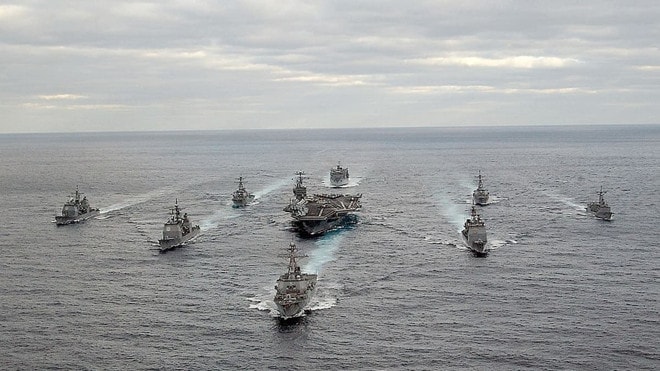America's 'Golden Fleet' ambitions in the race with the Chinese Navy
The Wall Street Journal (WSJ) reported that US President Donald Trump plans to upgrade the country's naval force and rename it the "Golden Fleet".
Since his first term as president, Mr. Trump has set a goal of strengthening the US naval fleet and increasing its size to 355 large ships, while the current number is about 290 ships.
Now Mr Trump has proposed a bigger idea of building a "Golden Fleet" to help the US deal with rivals, especially China's growing naval power.

Details of the US Navy’s modernization ambitions and the number of new ships being built have not been released. However, according to reports, Mr. Trump has called for the development of a massive armored ship capable of carrying a large number of missiles. This ship is expected to be more survivable than current US warships, which lack armor protection.
In addition, Washington also plans to build more smaller ships such as frigates, in larger numbers and at lower costs than the improved Arleigh Burke-class destroyers being built for the US Navy.
However, according to military analyst Ilya Kramnik, an expert at the Russian International Relations Council and a researcher at the Institute of World Economy and International Relations, the US Navy is in a state of being unable to cope with current challenges, not to mention competing with the Chinese Navy. US politicians and naval experts have also discussed this issue for many years.
The “Golden Fleet” ambition is being significantly impacted by the US shipbuilding capacity. Problems such as outdated technology, labor shortages and challenges from projects already implemented raise doubts about the ability to meet Mr. Trump’s ambitions and support allies such as building submarines for Australia. This means that catching up with China and the Chinese Navy becomes a challenge for the US.
The root cause of the problem lies in the general decline of the US shipbuilding industry, which was once the world leader but has since lost market share to European rivals and then to Japan, South Korea and now China.
The US accounts for less than 0.13% of the global commercial shipbuilding market, while China has a whopping 60%. As a result, the US military shipbuilding industry is in a precarious state. Today, the volume of US commercial shipbuilding is even lower than that of Russia, marking a serious systemic crisis.
Ms. Kramnik asked whether, in this situation, the US could develop a new missile cruiser. Currently, they are still struggling to build new frigates.



.jpg)

